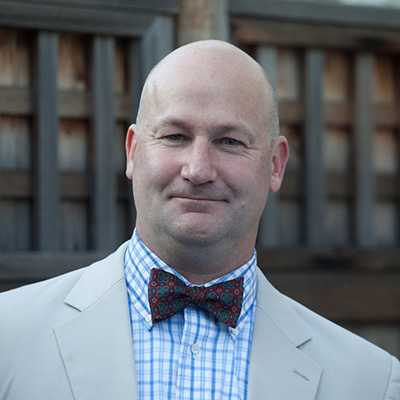NOAA's Laurel Bryant: US seafood industry, regulators should be proud of achieving “gold standard”

Laurel Bryant, the chief of external affairs in NOAA Fisheries’ Communications Office, retired at the end of 2019.
In 1989, Laurel Bryant began her career working for the United States House of Representatives Merchant Marine and Fisheries Committee, the predecessor to the House Natural Resources Committee. By 1994, she joined the National Marine Fisheries Service where among other positions, she served as the executive director to the Marine Fisheries Advisory Committee, and launched a number of key initiatives to provide more timely information about agency science and stewardship mission, including the weekly electronic newsletter FishNews, and the seafood web interface FishWatch. As chief of external affairs, Bryant focused on building strategic partnerships for the agency to strengthen communications with a broader spectrum of stakeholders involved with the seafood supply chain and coastal fishing communities, and building greater familiarity and public support for U.S. responsibly managed fisheries and seafood.
In an interview with SeafoodSource, Bryant talked about the meaning of the work she engaged in and how U.S. fisheries management changed during her tenure, as well as what its priorities will and should be moving forward.
SeafoodSource: A lot has changed over the last 25 years, and during that time, NOAA has led a transition to more sustainable, more stable fisheries through its management. What have been some of the conservation and industry benefits of NOAA’s management and vision for U.S. fisheries during that time?
Bryant: The U.S. system of fisheries management under NOAA Fisheries is now the global gold standard for managing wild-capture fisheries responsibly. The U.S. fishing industry and the seafood it produces increasingly benefit from that reputation in the market place. Perhaps more importantly for the long term is that the U.S. management process now demonstrates the nature of sustainability – it is not a destination or a ranking, but rather a dynamic process that requires continual monitoring and regular changes to respond to what the best available science determines as sustainable. In an ever-changing environment like the ocean, that’s critical for success. NOAA is working hard to export these practices abroad and help level the playing field for our own fishing fleets who abide by the most robust environmental laws out there.
SeafoodSource: What are you personally most proud of working on?
Bryant: There really isn’t one thing. I love the NOAA Fisheries mission. Playing a part in influencing true implementation of stewardship practices has been pretty awesome. It’s more a package of things I’ve been involved with in building the agency’s internal awareness of the need to communicate to entities beyond regulated stakeholders, and then building the capacity to do so. Through FishNews, FishWatch, a reorganization of the agency’s federal advisory body, MAFAC, and seafood-focused outreach strategies targeted to consumer-facing entities, we have moved the needle in amplifying the truth that if its seafood from a U.S. managed fishery or aquaculture operation, it is harvested under responsible and transparent standards accountable to the best available science.
SeafoodSource: What do you see as the big challenges that still remain for U.S. seafood?
Bryant: Beyond the hot mess that is climate change and the unique challenges it proposes to dynamic natural resource management, educating the public about the importance of sustainable seafood in general – and the importance of aquaculture for domestic food security in particular – remains an ongoing challenge controlled by special interests and not science. I hope our many science-based advocates will join the conversation and lend their independent expertise to overcome the special interests that have dominated the discussion. I also want to see more coverage of the scientific advancements achieved in aquaculture, especially advancements that the U.S. and NOAA have helped develop. We need to lean in on developing a diverse portfolio of seafood in the U.S. – that includes wild-capture, under-utilized species, and aquaculture. Done right, seafood is the most environmentally responsible protein we can produce, with an increasing number of studies demonstrating the health benefits. It is the protein of the future and the U.S. should be leading the way.
SeafoodSource: You have been an advocate for the importance of seafood’s nutritional and sustainability profile to growing seafood markets. How should the industry think about connecting with the consumer of the future?
Bryant: We need industry to work pre-competitively and establish transparent, accountable supply chains; help drive out bad players and help educate consumers about the importance of sustainably managed fisheries and fish farms to the overall future of the blue planet. Investing in sustainable and accountable wild-capture and aquaculture practices addresses so many environmental threats to our oceans and the social and economic abuses that occur in the global seafood supply chain. The U.S. has been calling attention to these issues for years, but it will take the broader spectrum of the seafood industry to take this hard work to the next level.
SeafoodSource: What are some of the key areas NOAA will be working on over the next year?
Bryant: I can’t speak from an official capacity since I’m no longer with NOAA Fisheries. I’ve watched our nation spend the last 40-plus years investing in stopping unsustainable practices of the past and rebuilding domestic fisheries based on science and accountability. We need to reward those investments in the marketplace. During the time of rebuilding, we lost a lot of our infrastructure and market shelf-space, along with the ability and need to train the next generation of hard-working fishermen and fish farmers. We need to keep responsible fishing and fish farming in business. I think you’ll see an effort to get a better handle on what appropriate role a science-based agency can play in helping to address some these challenges.
Photo courtesy of NOAA Fisheries






Share